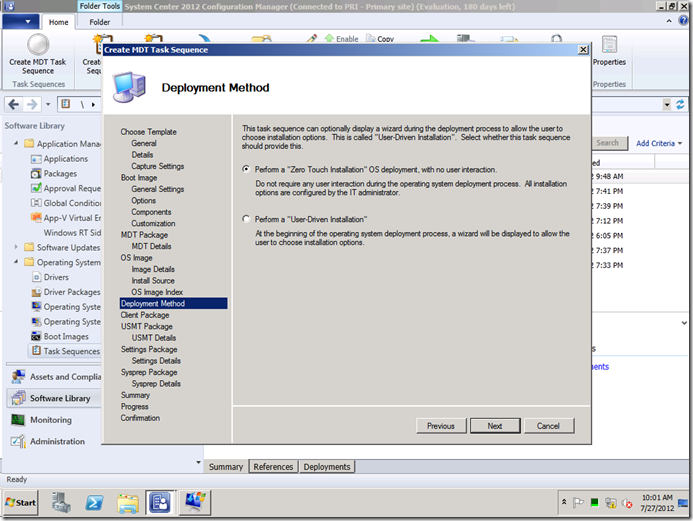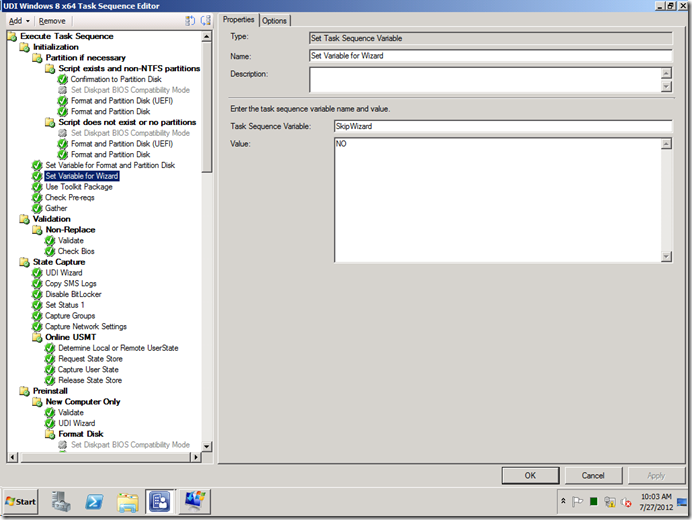MDT 2012 Update 1: Merged ZTI and UDI task sequences
Since we released MDT 2012 Update 1 Beta 1 a few weeks ago, I’ve received a few panicked e-mail messages from people asking “what happened to the UDI task sequence, it’s gone.” Don’t worry, it’s still there. What we have done in MDT 2012 Update 1 is merge the ZTI and UDI task sequence together into a single task sequence. There are a couple of reasons for doing this:
- You can dynamically choose whether or not to display the UDI wizard. This gives you the same capability as you have with Lite Touch, and in fact uses the same variable, SkipWizard. So if you specify SkipWizard=YES, it’s a ZTI deployment; if you specify SkipWizard=NO, it’s a UDI deployment.
- You don’t have to choose what functionality you want. By merging the task sequence templates, we get the best capabilities of both. That means that ZTI deployments now can do offline user state migration just like UDI deployments can. It also means that we display the same background progress display in ZTI deployments as you are used to seeing in UDI.
Longer term, I am hopeful that we can stop making any distinctions between ZTI and UDI: they are just slight variations on the same ConfigMgr client OS deployment scenario. Those same variations exist in Lite Touch as well, but that doesn’t mean “Lite Touch with a wizard” and “Lite Touch without a wizard” are two separate scenarios.
From an implementation perspective, we wanted to make sure that we gave you a simple way of choosing a default for SkipWizard. This is done as part of the “Create MDT Task Sequence” wizard. After choosing the “Client Task Sequence” template, you will see a new wizard pane:
The choice that you make ends up configuring a specific step in the resulting task sequence:
So if you want to dynamically choose “wizard or not”, you can remove this step and instead set the value through CustomSettings.ini.
See my previous posting at https://blogs.technet.com/b/mniehaus/archive/2012/07/01/mdt-2012-update-1-dealing-with-in-use-files-when-capturing-user-state.aspx for details on how to leverage offline user state captures for ZTI deployments.

